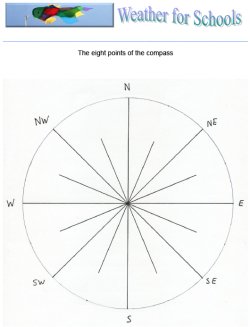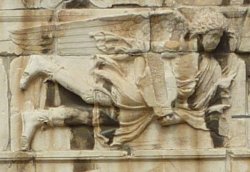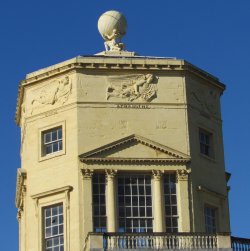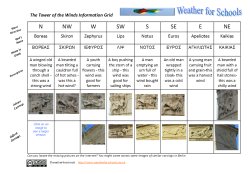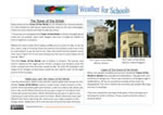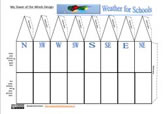The Tower of the Winds
The Ancient Greeks invented the term 'meteorology' which was used to mean atmospheric disturbances. In 300BCE Aristotle, a Greek philosopher, wrote a book called 'Meteorologica' to try to explain the weather. This was the main book on the subject for hundreds of years!
It is not surprising then to find an ancient building dedicated to the monitoring of weather and time. The Tower of the Winds was built long ago in Ancient Greece. Amazingly it has survived to this day. Many visitors to Athens, the capital of Greece, go and see this wonderful building. They like to take photographs of it to show their friends and family, and to help them remember their visit. They also like to find out what it was for. Look at the rest of the page to find some information on this amazing link with the weather of Ancient Greece.
If you would like to find out what weather the winds in your location bring read more on the Wind Roses and Wind Direction page
Tower of the Winds in AthensIt is hard to say when in fact the Tower of the Winds was built. Some people think it was built in Roman times, others think it is much older and was built when Athens was still a part of Ancient Greece. It was given the name Tower of the Winds because of the carvings on each wall showing the different winds. The floor is an octagon, so there are eight walls. This is one for each of the eight points of the compass. There used to be a water clock inside the building. There was also a sundial on the walls. The top of the building had a weather vane on it. So it was a very useful building when it was new. |
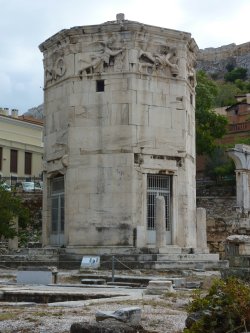 |
The Wind Directions When the tower was built carvings were added to each wall to represent the eight winds. The architect thought about each wind. Was it usually hot, warm or cold? This depended on where it came from. If it came from the direction of the equator it would most likely be hot. If it came from one of the poles, north or south, it would most likely be cold. Then he thought about whether the wind bought rain or not. If the wind came over the sea it might bring rain, traveling over land would most likely mean it would be dry. |
|
The GodsThe gods on the Tower of the Winds were chosen to match the characteristics of the winds. The south wind came across the sea. The god Notus (on the right) was used for this carving. He was pouring water out of a container, as if he was bringing rain. You can just about make out the upside down container in his hands. To find out about the other gods look at the Tower of the Winds information sheet. When you look at this on a computer you can click on the pictures to see bigger images. |
|
Copies of the Tower of the WindsMany years ago when rich people went traveling and saw the Tower of the Winds in Athens they were amazed by it. They knew that it was very old and very special. Some of them decided to build their own Tower of the Winds near their houses at home. A few of these are still there. There is one in Oxford, UK on a building called the Radcliffe Observatory. Its carvings have not been worn away by the wind and rain because they are not as old. You can easily see who is who. You can see more of the Oxford gods on the Tower of the Winds information sheet. |
|
This is all that is left of the Temple of the Winds on the Shugborough estate in Staffordshire. It too use to have the carvings of the Greek gods at the top of the walls. You can see drawings of it as it was on the Staffordshire Past Track website. You can see that it is the same building. You can see a picture form the other side here. This one shows the ornate doorways a little more clearly. |
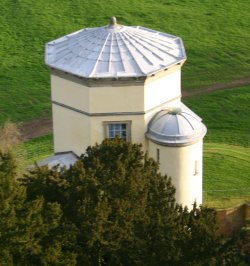 |
Design your own Tower of the WindsWhen you have worked out what the different winds bring to your area you can design a Tower of the Winds for your home. Think about what you could use to represent the different winds, dry and cold, hot and wet, etc.. Print out the design sheet and draw your gods in the sections under the roof. In the example on the right a warm and wet wind has been represented by somebody watering the garden as it might help to make things grow. The snowman represents the cold wet wind. You will come up with lots of interesting ideas. |
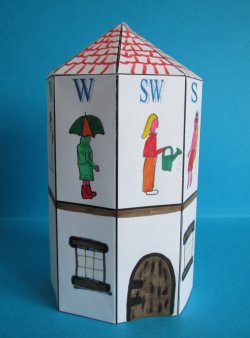 |
